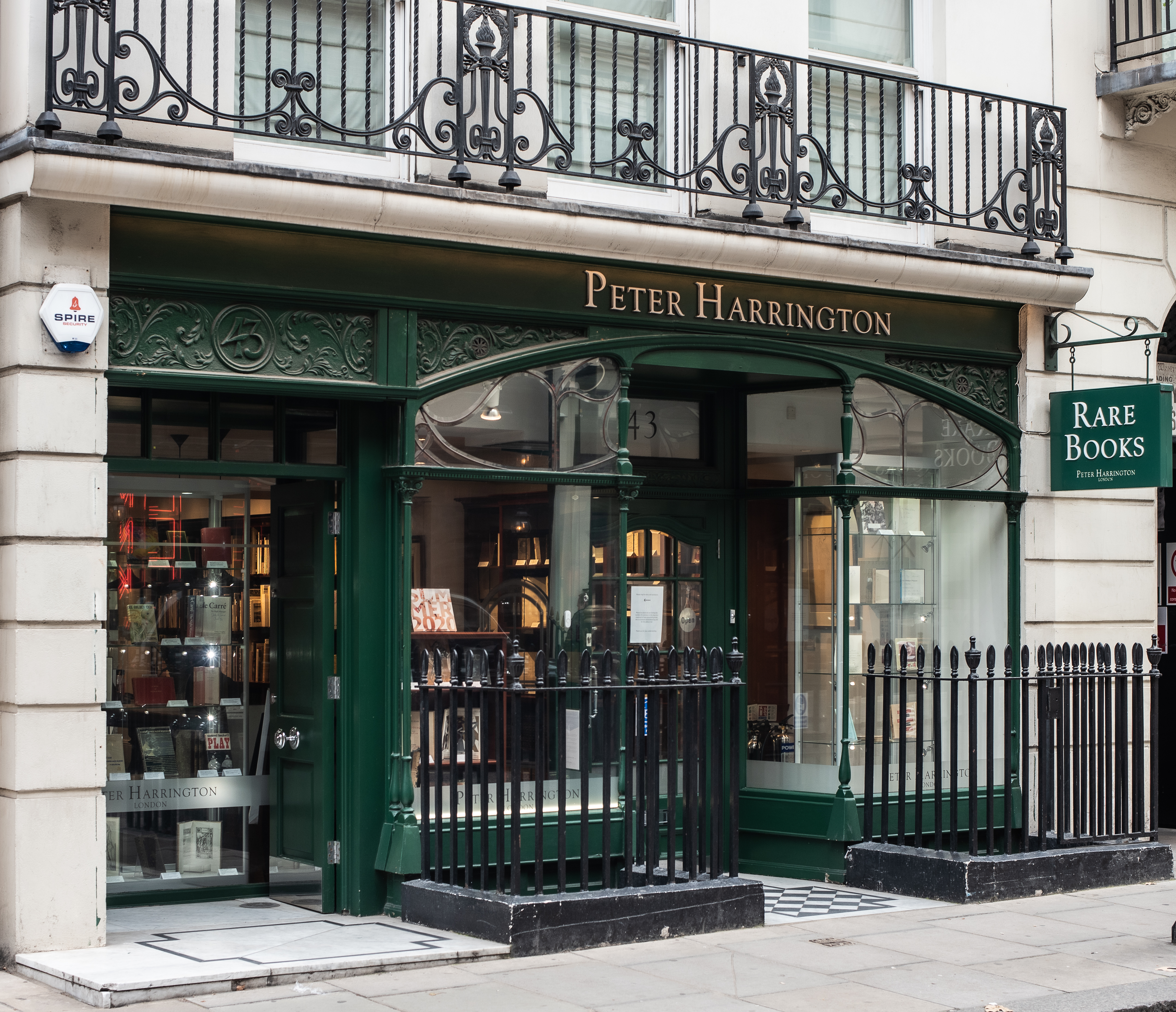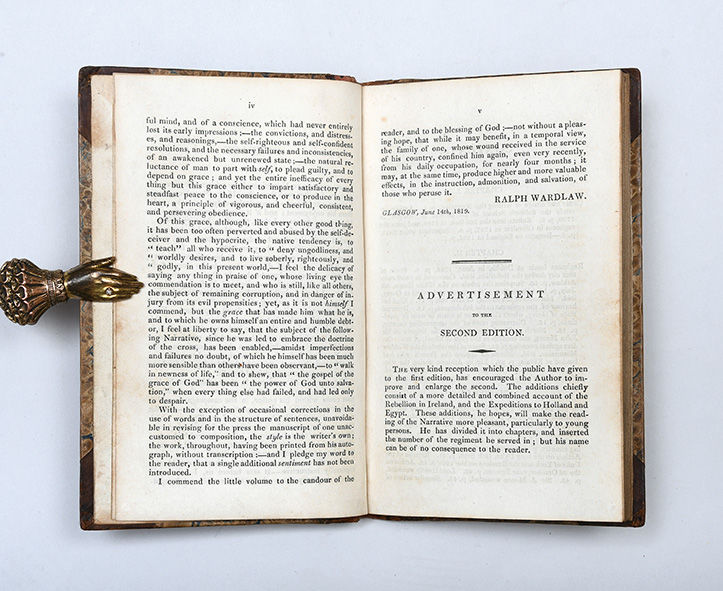Glasgow: Printed at the University Press, sold by A. & J. M. Duncan; M. Ogle; J. Smith & Son [& two others; three each in Edinburgh & London; one each in Birmingham, Bristol & Manchester],, 1820. The fury and bustle of action" a ranker's view of campaigning with the Gordons The very scarce enlarged second edition, following the first of the previous year; "the additions chiefly consist of a more detailed and combined account" of the three military expeditions (p. v). Billanie's book was "the first publication of an Egyptian campaign memoir by a lower-ranked soldier" (Quinn, p. 30) and his well-written accounts of combat are colourful and gripping. George Billanie was born in Glasgow in March 1779 (his name also spelled Billinie) and he reveals here that in 1796, aged 17, he joined the newly formed 92nd Foot (Gordon Highlanders). His first posting was to Ireland during the rebellion of 1798 and he deplores the "ferocity of civil war; it has barbarities not now practised in the national wars of Europe". While stationed at Gorey, County Wexford, the Gordons join Sir John Moore's "tedious expedition to clear the Wicklow hills" (ODNB entry for Moore). Briefly back in England, the regiment, part of Moore's brigade, sail with the Duke of York's ill-fated Helder Expedition of 1799. On 2 October they take part in the costly and indecisive encounter at Egmond-aan-Zee, on the coast west of Alkmaar, of which Billanie gives an excellent account of the confused fighting. Forming up on the beach in darkness, at dawn they drive in the enemy's outposts but advance with difficulty across the terrain ("there was a great deal of bloodshed in the interior of the sand-hills, by the skirmishing, and detached attacks upon particular points"). Standing in an exposed position in the afternoon they come under incessant fire ("the balls whistling over us and amongst us"), Billanie commenting that "a situation of this kind is the most irksome for a soldier to be in; for when actively engaged, the fury and bustle of action, to a considerable degree, banishes the dread of danger from the mind". Both the 92nd's colonel, Lord Huntly, and Sir John Moore are wounded and Billanie finds himself in the front division: wheeling through an opening in the sandhills they are "instantly exposed to a fire upon both our flanks and front. This staggered us
[and] the action soon became on both sides quite irregular
For three quarters of an hour we maintained a furious action, and drove the enemy to a considerable distance". Billanie, thirsty and exhausted, narrowly escapes a hail of bullets. At sunset the battle peters out, the Gordons having taken a battering: "When the regiment mustered in the evening, about one half were missing". In early March 1801 the 92nd are in Egypt with Sir Ralph Abercromby's expedition and within a week, on 13 March, are engaged in the fierce action at Mandora. When the French launch a surprise attack on 21 March near the ruins of Nicopolis, the Gordons "en route to Aboukir Bay
were given permission to join the fighting and Major Napier immediately marched them to where the fighting could be heard on the edge of a set of Roman ruins" (The Gordon Highlanders Museum). This was the Battle of Alexandria, of which Billanie gives another memorable account and where he is wounded: "I had fired about twelve rounds, when the sun was beginning to appear in the horizon, and was in the act of ramming another cartridge, when a shot from one of the sharp-shooters, struck upon the inner ancle [sic] bone of my left foot
I was stunned with the stroke". Evacuated with the wounded to Aboukir, he returns via Rosetta to England, where he is admitted an out-pensioner at Chelsea Hospital, eventually arriving home to Glasgow. Billanie's account is shot through with religious doubts and affirmations and in this regard is an important source for the study of belief among the ordinary rank and file (see Michael Snape, The Redcoat and Religion, 2005). The first edition was entitled Narrative of a Private Soldier in one of His Majesty's Regiments of Foot, and also carried the preface by the Scottish Congregational minister Ralph Wardlaw, a firm abolitionist and "a figure of courage, eloquence, and learning, [who] contributed significantly to the growth of religious and political liberalism in Britain" (ODNB). An American edition was published in 1822 at Philadelphia "for the benefit of the United Foreign Missionary Society". Duodecimo (166 x 98 mm). Contemporary half calf professionally refurbished, smooth spine divided by paired gilt fillets, Shell pattern marbled sides. brown speckled edges. Book stamp of one C. Mills, Edinburgh, to front pastedown and embossed stamp of Gordon Mills on facing page, scattered foxing, a touch of finger soiling to title page. A very good copy. Not in Sandler. Simon Quinn, "Orientalists in uniform? British military encounters and experiences in Egypt, c.1798-1801", thesis, University of York, 2017. Just eight locations recorded worldwide, all in the UK: three in Scotland (National Library, Edinburgh, St Andrews), British Library, Cambridge, Oxford, and Trinity College Dublin; only two copies of the first edition: BL and Durham.









